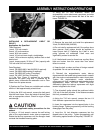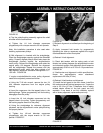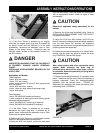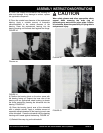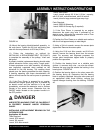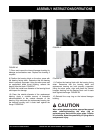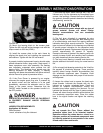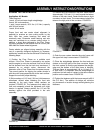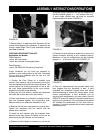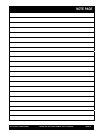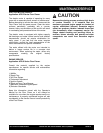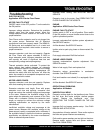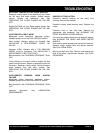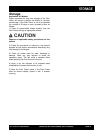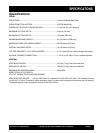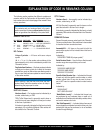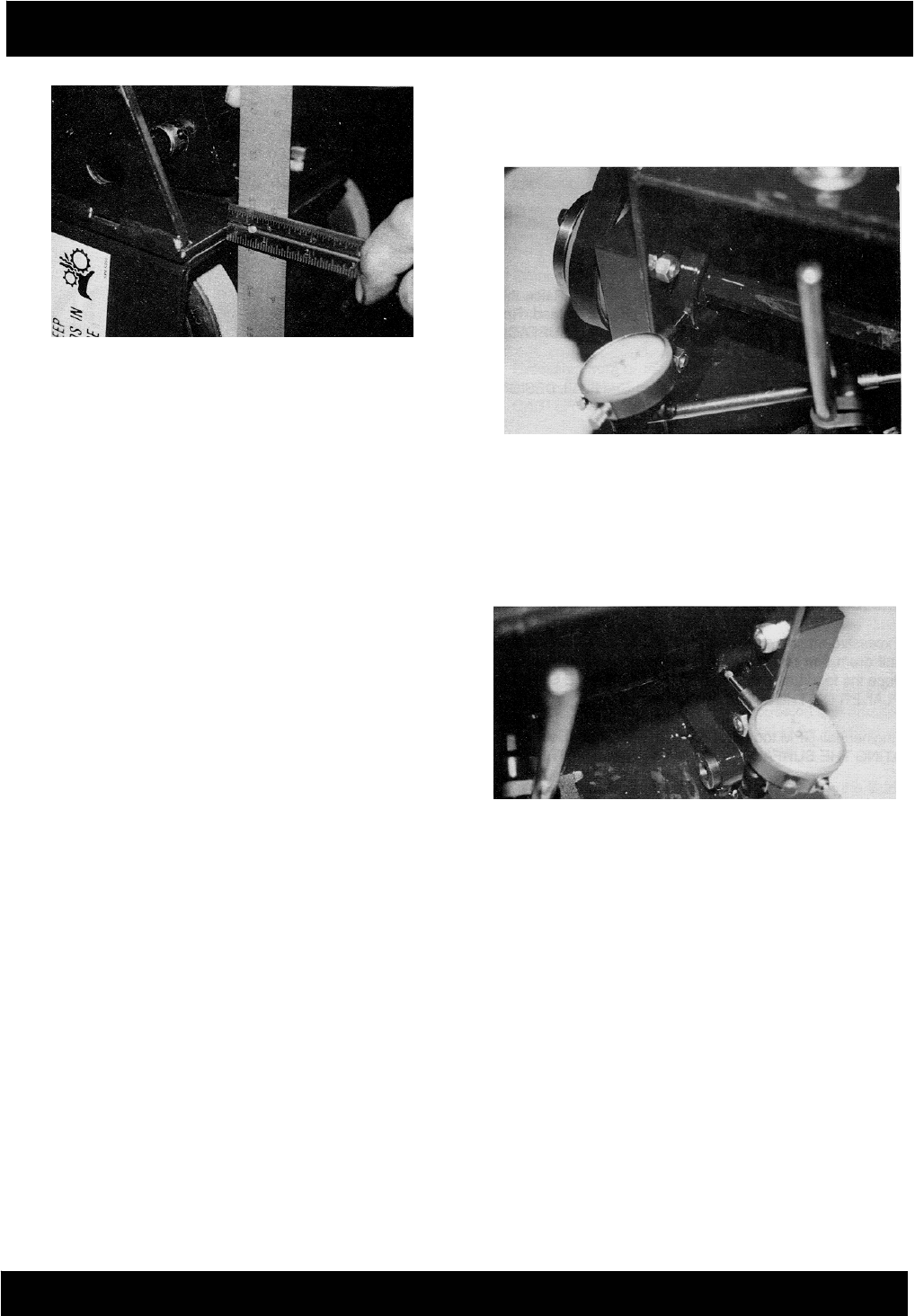
ASSEMBLY INSTRUCTIONS/OPERATIONS
8FP FLOOR PLANER SERIES OPERATION AND PARTS MANUAL REV #2 (05/28/09) PAGE 41
FIGURE 53
7) Repeat Step 5 to determine that alignment did not
change while tightening the fasteners. If alignment did
change, repeat Steps 2 thru 6 until satisfactory results
have been achieved.
CHECKING DRIVESHAFT RUN OUT.
Application: All Models.
Tools Required:
1 each, 3/4 inch wrench.
1 each, dial indicator and magnetic base.
Parts Required:
1 each, PN 29020-015 driveshaft (if required).
Proper driveshaft run out limits are essential to
produce an even cutting action by the flails. Driveshaft
run out limits are measured with the use of a dial
indicator for accuracy.
1) Position the Floor Planer on a suitable work
surface. If the engine is not to be removed, fuel and oil
must be dra
ined from the fuel tank and crankcase. The
normal position for checking driveshaft run out is with
the main frame perpendicular to the work surface.
Support the unit with proper blocking.
2) Using the 3/4 inch wrench, remove the capscrews
that retain the access door to the main frame.
3) Clean and remove a ny excessive material build-up
from the threaded bosses and surrounding area.
Material build-up can affect the driveshaft run out.
4) Remove the flail drum and replace the access door.
Tighten the capscrews with the wrench until the
access door is secured.
5) Install the dial indicator with the magnetic base
attached to the main frame. Drivesh
aft run out can be
measured by the dial indicator at two locations:
a) Position the dial indicator to measure run out on the
driveshaft flange. Maximum run out (as measured by
the dial indicator gauge) is + - .010 inches (.254 mm).
A worn flange surface may not allow an accurate
measurement to be taken. FIGURE 54.
FIGURE 54
b) Position the dial indicator to measure run out on the
internal hexagon bushing of the outboard bearing.
Maximum run out (as measured by the dial indicator
gauge) is + - .015 inches (.381 mm). FIGURE 55.
FIGURE 55
6) Run out measurements that exceed these limits
may suggest that the drivesh
aft is bent. A bent
driveshaft will accelerate bearing wear and failure
while contributing to uneven flail cutting action. Under
certain circumstances, a bent driveshaft can be
removed and straightened in an arbor press. See the
SERVICE section for specific information pertaining to
replacing the driveshaft. If the straightened driveshaft
still exceeds the established run out limits after re-
assembly, it must be replaced with a factory approved,
replacement part.



